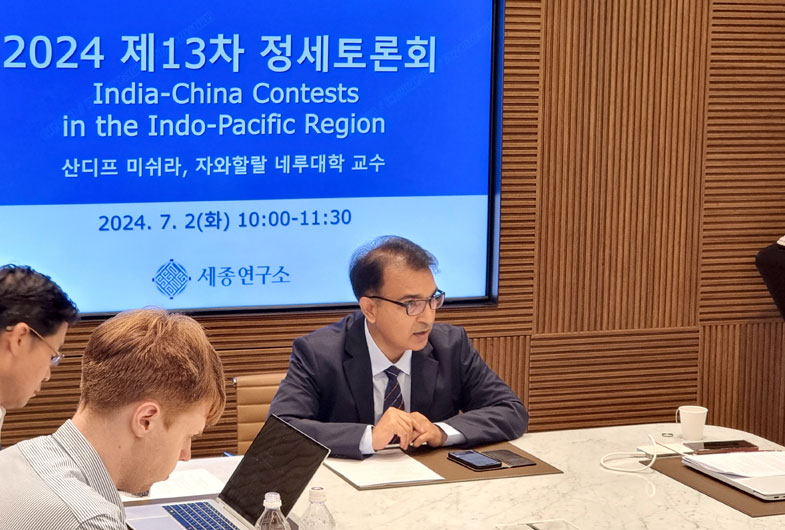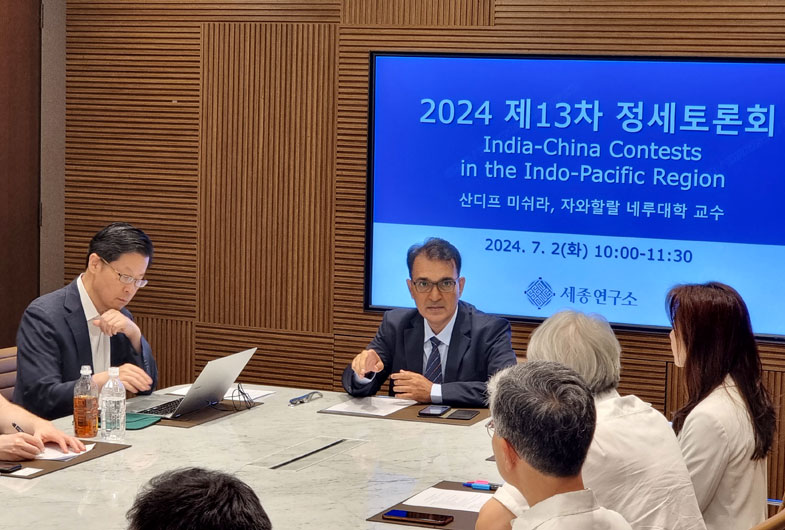On July 2nd (Tuesday), Sandip Mishra, Professor at Jawaharlal Nehru University gave a presentation on "India-China Contests in the Indo-Pacific Region" at the 13th Sejong Institute Colloquium.
The discussion was moderated by Yoon Jung Choi, Director of the Center of Diplomatic Strategy.
Relations between India and China began with the Panchsheel Agreement in 1954 but were cut short by the Sino-Indian War of 1962, and were restored in 1979. Trade between the two countries grew from $200 million to about $136 billion in 2022 and $119 billion in 2023. Prime Minister Modi also held two summits with President Xi Jinping in 2018 and 2019, and India worked with the SCO and a part of BRICS, as well as a founding member of the Asian Infrastructure Investment Bank (AIIB), where it is the second-largest Contributor.
India and China share a border of more than 4,000 kilometers, but there is no detailed agreement on the demarcation of the border at the McMahon Line, and the border dispute has been ongoing since 1962. In 1988, a mechanism was established to coordinate these border issues, but a final solution has not been reached, and the border dispute is also heavily influenced by the U.S. Indo-Pacific strategy, as China-Pakistan relations are growing close. China is aggressively expanding in the Indian Ocean with its Belt and Road Initiative and The String of Pearls strategies.
Two scenarios are being suggested.
Scenario 1:
China does not address any of India’s concerns- border issues, maritime expansionism, security buildup, revisionism, etc.
India may go closer to the US, Japan, Australia, and other like-minded countries, more overt military pacts, abandonment of ‘third way’
Scenario 2:
China makes some concessions on the border and the Indian Ocean
India may keep some distance from the countries that have been taking China's ‘counter-balancing moves’
However, India is pursuing a third path by asserting its status as a middle power that seeks to jointly mediate between the militarizing U.S. and China in the Indo-Pacific region, and South Korea is one of the two countries that can lead this "third path," which requires bilateral cooperation.
India would like to have a ‘third way’ by arguing for a network of middle powers that collectively attempt to moderate the US and China in their overt militarization of the region. The network would also create an open multipolar region where interstate relations are conducted through mutually agreed rules, norms, and institutions. India and South Korea appear to be two important players who could take lead in articulation of such ‘third way’






